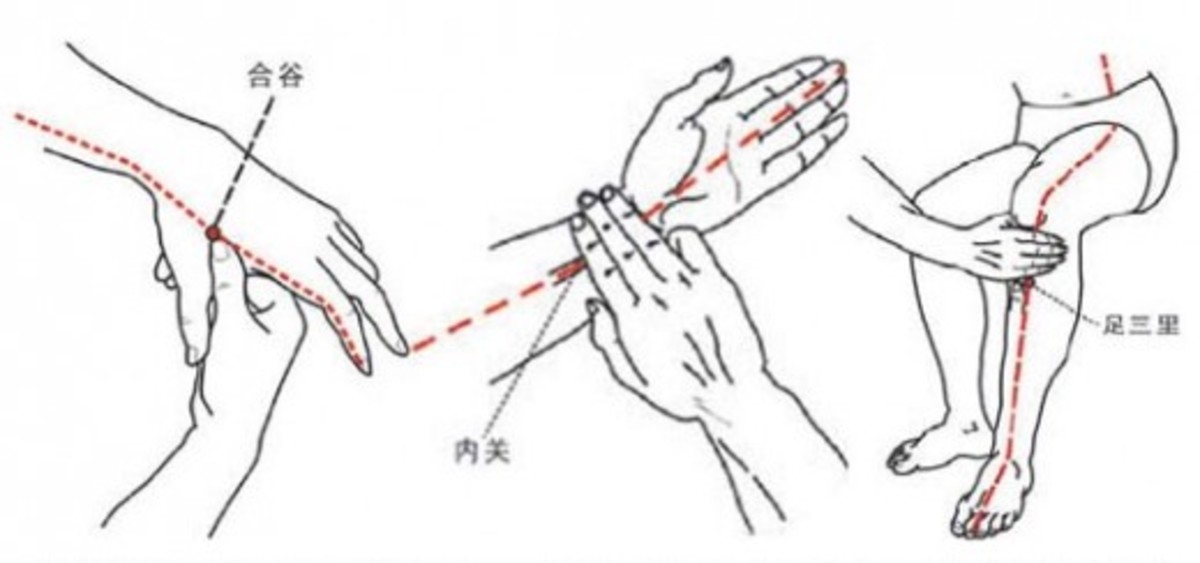How Cardio-Muscular Endurance Melts Off Pounds
Get Walking, See the World While Burning Fat

Walking is the Best Aerobics Fat Burning Activity
Tread Water for Low Intensity Fat Burn Exercise

Understand Cardio-Muscular Endurance and THR to Keep the Fat Off
Through the years I’ve had many ask me why is it important to maintain the body’s muscular endurance condition if you want to keep weight off for good. And why diet alone will not keep the body fat off as you age for the majority of us. You will soon find out, a balanced diet is only half of the body fat equation. So I’m going to focus on aerobic activity that is the other half of the body fat regulation since we all know a balanced diet is important.
First, I’d like to review some important facts of how the body’s metabolism works when muscular endurance exercise is added to the daily activity routine. And then lead into how to build and monitor muscular and cardiovascular endurance based on THR (Target Heart Rate) zone.
Why is it important to understand the connection with muscular-cardiovascular endurance activity and fat burning efficiency? The simple answer is, muscular endurance has a direct relationship with your cardiovascular health and the oxygen required to burn body fat. And if you want to burn more body fat with less diet restrictions, you must improve your cardiovascular-muscular endurance. You must exercise correctly with frequency to have a good fat burning furnace.
In order to burn body fat efficiently for a lifetime, the body requires 3 things: An oxygenated blood environment, conditioned body muscles and cardiovascular systems and aerobic exercise activity that falls within the THR range zone for your age group.
Walking and jogging are the best forms of aerobic activity. Even deep breathing exercises practiced through yoga classes for example, or at home frequently will increase the fat burning metabolic process. But if you add aerobic exercise activity, the fat burning process is greatly increased. Why is this? As muscular endurance increases, so does the hearts endurance and ability to pump more oxygen enriched blood to working muscles.
During aerobic activity the body is more oxygenated and metabolizes more fat as a fuel source preference. On the other hand if exercise is more anaerobic in nature, the body will look for a quick accessible energy source like glucose and glycogen during high intensity exercise (heavy weight training, power lifting, sprinting, etc.)
Anaerobic activity is muscular work that is short duration where lactic acid builds up in the muscle and one must takes frequent rests. Unlike low intensity activity, the body prefers fat as a fuel source during aerobic conditioning. Anyone can condition their body provided in reasonably good health to endure a walking activity for long distances without getting winded. Walking is said to be one of the best fat burning muscular-cardio endurance programs you could participate in.
It is also important to understand a little bit about the anatomy of muscle groups. In doing so, you will better be able to relate why muscular endurance activities metabolize more fat. There are mainly 3 types of muscle groups in our bodies. They are fast twitch, slow twitch and intermediate twitch muscle fibers. Slow twitch muscle fibers prefer fat as a fuel source during low intensity long endurance types of work (i.e., walking, biking, hiking, etc.).
The fast twitch muscle fibers are mainly found in the shoulders, arms, calves (smaller muscle groupings). Fast twitch muscle fibers are responsible for fast muscle movement activity and prefer “mostly” glucose and glycogen (boxing, karate, sprinting, fencing, etc.). Slow twitch muscle fibers are found in the chest, upper back and legs used for overall power and endurance activities. The rest of the body’s muscle anatomy is a composition of slow/fast twitch muscle fiber (combined mixed groupings– also known as intermediate muscle fiber).
Every form of activity uses approximate percentages of specified fuels to energize physical activity while working muscles. However, various intensities of activity utilize some fuels more efficiently than others. This fact depends on intensity, duration, frequency and type of work and task specific activity.
Since these 3 muscle fiber types utilize oxygen differently depending on the types of work the body performs; it is also important to train for a specific activity for the greatest fitness goal success. For example, a walker, jogger, biker is very dependent on the large muscles in the upper legs/buttocks and trained to task for long, low intensity endurance activities. Whereas a body builder, football player and power lifter use the same large muscles training them for short bursts of power, heavy weights to increase overall strength.
While working within a low intensity aerobic activity; this will provide an oxygen enriched blood environment for the large muscle groups for long periods of time. When the body is flush with oxygen through endurance activity the fat burning furnace becomes the muscles preferred fuel and the heart becomes better conditioned to circulate oxygenated blood and burn more body fat. The body’s aerobic furnace requires an ignition source (low intensity aerobic activity), fuel (glucose, glycogen, free fatty acids) and oxygen to burn the fuel (your goal is to burn more fat than the other fuel sources).
What is the best way to know if you are working within your fat burning furnace zone? You can monitor this simply by understanding your heart rate. It has long been known through scientific study that aerobic conditioning, age and heart rate correlate to an efficient fat burning furnace. And since the body prefers to burn fat during low intensity, long endurance exercise, it is good to know how to calculate your Target Heart Rate (THR) and monitor this rate during aerobic activity.
Simply search for Target Heart Rate zone or Karvonen formula by using your favorite search engine. There is much information on the Internet that can illustrate how to calculate your Target Heart Rate zone to burn more body fat while exercising.
The reality of the exercise situation, you don’t have to kill yourself off with strenuous exercise to burn fat. Just the opposite, many of you should slow down on aerobic exercise intensity if your goal is to tone muscle, increase cardio capacity and burn more fat. I know, many of you just don’t believe that you don’t’ have to kill yourself exercising to lose fat. If you are not training to be an Olympic contender and your focus is toning and fat burning; than a low intensity aerobics program incorporated into your training program is for you.
If you don’t want to go through the effort of calculating Karvonen THR fat burning zone… Here’s a simple fat burning activity tip without calculations: Walk 5 days per week, walking longer distances each day after you get conditioned and then strive to achieve 5 mile walk loops each walking day. Easy Monitoring of Aerobic Walk: If you are out of breath, slow down. If you can’t carry on a conversation without gasping for air, slow down. Chances are if you regulate your pace intensity by your ease of breathing and speaking, you are within your THR and you will burn more body fat.
If you’re serious about burning more body fat, understanding how to calculate and use Karvonen’s THR zone will be of great benefit to you. When you find the Karvonen formula to calculate your THR zone, you’ll want to plug in training intensity zones between 50-70% (50% = Beginning Aerobics Intensity, 70% = Intermediate Aerobics Intensity). When exceeding 70% of the workout intensity, the body begins to utilize other various fuel sources available to working muscles; which may not be to the benefit of your fitness goal; especially if your fitness goal is to reduce body fat. So if you’re walking and you’re having problems catching your breath, or can’t speak well, you may be walking at greater than 70% aerobic intensity for lack of fitness conditioning. Adjust to a slower walking pace.
How do you know when to stop pushing yourself? You can push yourself as far as you like, or as little as you want, by monitoring your training intensity and adjusting to your THR aerobic zone. However, listen to your body. If your body hurts, or it becomes difficult to breath, or talk “slow down!”
Reduce your intensity by recalculating your Karvonen THR workout zone. Use a lower intensity multiplier to maintain preferred THR aerobic goal. Then work your way up from there during the following week. Listen when your body talks—it is telling you something important. Remember that everyone has limitations and varying levels of fitness conditioning. Not everyone can be a super aerobically conditioned champion. But we all have the ability to become a fat” burning furnace by improving our cardio-muscular endurance if we learn how to exercise within our THR zone.









